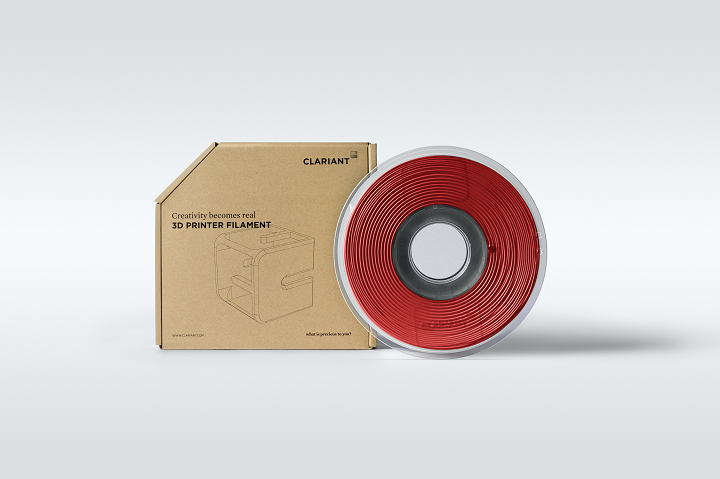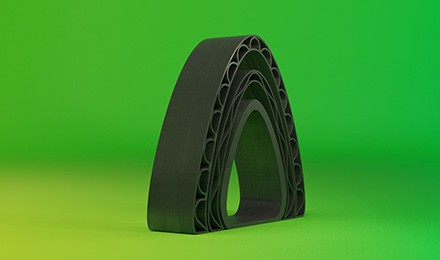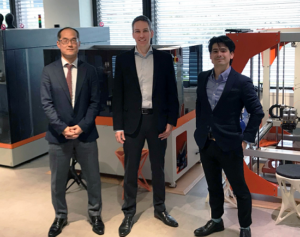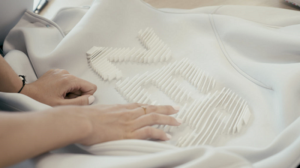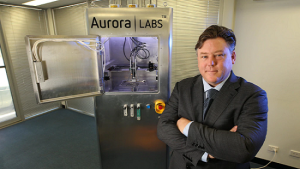Royal DSM Acquires Portion of Clariant 3D Printing Materials
Royal DSM has announced that it will be taking over portions of the 3D printing portfolio of Swiss chemical giant Clariant, representing a somewhat dramatic shift in the additive manufacturing (AM) materials market. Specifically, DSM will now have a larger collection of filament, pellet and powder products for 3D printing.
The 3D printing materials space has become a competitive one since an increasing number of established chemical companies began entering the space. Among them was Clariant, a near $6.5 billion spin-off of Sandoz, once known as the inventors of LSD but which has since become Novartis, one of the largest pharmaceutical companies in the world. In 2017, Clariant launched its 3D printing business and, only three years later, Clariant has determined that AM materials don’t fit within its general strategy, though it will keep a foot in the market with its additives and flame retardants.
The Dutch nutrition, health and materials multinational DSM, meanwhile, has been in the additive materials business for over 25 years and has been rapidly increasing its growth in the space particularly in recent years. Its finance capital arm, DSM Ventures, has poured money into a number of projects, including material startup Adaptive3D, smart inkjet 3D printing company Inkbit, post-processing firm Additive Manufacturing Technologies and Voxel8, a startup dedicated to multimaterial 3D printing. DSM continues to expand its materials horizons, as well, focusing on such pellet-based extrusion and flame retardant filament, among others.
Clariant is handing over several staff members, its background in powder development, a piece of its filament and pellet materials portfolio to DSM. Additionally included is a small production line for manufacturing small batches of materials, as well as some operations dedicated to 3D printing customer relations.
DSM suggests that these acquisitions will not only increase its overall product portfolio, but will allow for more agile production with “faster product tweaks based on application needs” due to both the expertise of the Clariant team that will be joining DSM and a “dedicated, highly flexible and high-speed compounding setup.”
Joris Peels, 3DPrint.com Executive Editor and SmarTech analyst, provided his insight into the news, saying, “[I loved] their rail product; the packaging was awesome, the marketing was really good; it was very slick and well done. It was smart of them to use their compounding and additives expertise to make flame retardant and other highly functional products. If the Clariant team brings its agility and speed, as well as application knowledge, to DSM it should make the [Dutch] giant nimbler.”
In particular, Peels noted how quick the Clariant team was in the market, adding that the acquisition could provide DSM with its mark in 3D printing filaments:
“Relative to other polymer companies the Clariant team really our executed and in a very rapid manner met the market with high quality compounds and filaments for specific applications. Clariants products, filaments, compounds and the selected additives are all very high grade and their products were very application focused and ahead of the curve,” Peels said. “DSM has yet to really make a mark in filaments and the Clariant teams’ agility and market knowledge could give DSM the edge that it seeks on application focused FDM filaments.”
As DSM continues to grow in the additive space, it will be competing against the likes of BASF, the world’s largest chemical company, which is also making serious moves within the space and at a rapid pace. The most notable and recent may be the purchase of 3D printing service bureau Sculpteo, as well as its large investments in Materialise and Essentium. As these transformations continue to occur in materials, we will certainly see the AM industry as a whole change shape in new and unexpected ways.
The post Royal DSM Acquires Portion of Clariant 3D Printing Materials appeared first on 3DPrint.com | The Voice of 3D Printing / Additive Manufacturing.
3D Printing News Briefs: January 16, 2020
In today’s 3D Printing News Briefs, we’ve got a little business news, followed by stories about materials, and finally ending with some 3D printed fashion. PostProcess Technologies is expanding in Japan with a new partnership. Smart International has launched a material partnership program, and CRP Technology is introducing a new Windform material. Finally, a Spanish fashion brand is using BCN3D’s technology to make some of its clothing.
PostProcess Technologies Enters Asian Market with New Partnership
Automated post-printing solutions provider PostProcess Technologies Inc. announced that it’s entering the Asian additive manufacturing market, and expanding the reach of its solutions, by naming K.K. IRISU (C. ILLIES & CO., LTD.) as its first distribution partner in Japan. PostProcess chose the high-quality industrial machinery and technologies specialist, to help serve its growing base of customers in Japan and represent its data-driven technologies because of its expertise and experience. The partnership is mutually beneficial, as ILLIES can now offer its customers access to technology that will automate common post-printing processes and enable “additive manufacturing at scale.”
“K.K.IRISU’s main objective is to educate the Japanese market in additive manufacturing and to continue to be the solution provider for the Japanese 3D manufacturing world. We feel that by adding PostProcess Technologies to our lineup, will help assist the Japanese market to compete with other countries in Additive Manufacturing as well as globally maintain the high standards of the tag ‘Made in Japan’,” said Dr. Frank Oberndorff, President of K. K. IRISU.
Next month, both companies will exhibit at the Design Engineering & Manufacturing Solutions (DMS) 2020 Expo.
Smart International Introduces Material Partnership Program
 This week, Smart International, the global brand licensee in 3D printing for KODAK, announced the launch of a new Materials Partnership Program in order to help its customers achieve a repeatable 3D printing experience, while also meeting the demand for high-quality, yet easy-to-print, engineering materials. The company has already developed, and tested, material profiles for filaments from its partners BASF, Clariant, and DSM, which will help provide optimal conditions for these third party materials on the Portrait 3D printer. Print profiles were created from this data, and can either be accessed from the KODAK 3D Cloud or downloaded from the Smart3D website.
This week, Smart International, the global brand licensee in 3D printing for KODAK, announced the launch of a new Materials Partnership Program in order to help its customers achieve a repeatable 3D printing experience, while also meeting the demand for high-quality, yet easy-to-print, engineering materials. The company has already developed, and tested, material profiles for filaments from its partners BASF, Clariant, and DSM, which will help provide optimal conditions for these third party materials on the Portrait 3D printer. Print profiles were created from this data, and can either be accessed from the KODAK 3D Cloud or downloaded from the Smart3D website.
“We feel it is of vital importance to continually adapt to the ever-evolving 3D printing market. Partnering with top filament companies like BASF, Clariant and DSM gives the customer the opportunity to choose the material that best fits their project, and gives them confidence to use these high-quality 3rd party materials with the KODAK Portrait 3D Printer,” said Roberto Gawianski, the CEO of Smart International. “We are pleased to be able to assist in the development and evolution of 3D printing filaments, and will continue to support progress in this area.”
BASF material profiles include Ultrafuse ABS Fusion+, Ultrafuse PAHT CF15, Ultrafuse PA, and Ultrafuse Z PCTG, while Clariant now has a profile for its popular 20% carbon fiber-reinforced polyamide 6/66 PA6/66-CF20 filament. Smart International also created material profiles for DSM’s Novamid ID1030, Novamid ID1030 CF10, a carbon fiber filled PA6/66 copolymer filament and Arnitel ID2060 HT.
CRP Technology’s New Windform P2 Material
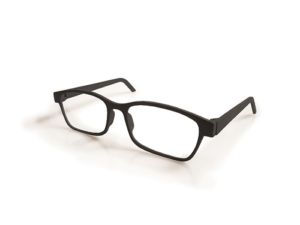 Italian company CRP Technology is introducing the latest material from its Windform P-LINE range – the glass fiber-reinforced thermoplastic polyamide Windform P2, which the company states has “excellent mechanical properties” for its High Speed Sintering (HSS) technology. The new material has high tensile strength (39.24 MPa), combined with increased stiffness (2925.20 MPa), and is great for insulating, as it is glass fiber-filled. Windform P2 is good for producing end-use parts that need high stiffness, as well as manufacturing components with detailed resolution.
Italian company CRP Technology is introducing the latest material from its Windform P-LINE range – the glass fiber-reinforced thermoplastic polyamide Windform P2, which the company states has “excellent mechanical properties” for its High Speed Sintering (HSS) technology. The new material has high tensile strength (39.24 MPa), combined with increased stiffness (2925.20 MPa), and is great for insulating, as it is glass fiber-filled. Windform P2 is good for producing end-use parts that need high stiffness, as well as manufacturing components with detailed resolution.
“Windform® P2 is the second polymer from P-LINE, the new Windform® range of materials for high speed production-grade 3D printing, introduced on the market less than a year ago,” said Engineer Franco Cevolini, CRP Technology CTO and VP.
“This is a very important property. Windform® P2 is stiffer than Windform® P1 because Windform® P2 is reinforced (Windform® P1 is not reinforced). Most of the reinforced materials for similar technologies currently on the market, show a decrease in the tensile strength property. My staff and I have been able to preserve the high tensile strength in Windform® P2. Therefore, Windform® P2 overall’s performance is superior than the performance of similar materials currently on the market for similar technologies.”
ZER Collection 3D Printing Clothes with BCN3D
Spanish fashion brand ZER Collection introduced its first collection at the most recent Mercedes Benz Fashion Week in Madrid. The label, which was founded in 2017 by Núria Costa and Ane Castro and designs ‘futuristic, functional and urban clothing with sporty aesthetics,’ incorporated 3D printed parts, made with BCN3D’s Sigma printer, into 12 of the outfits; this system allows for the printing of two different materials, including flexible TPU. ZER Collection is using 3D printing in order to accelerate its production manufacturing processes and reduce waste, while also contributing to the use of sustainable new technologies in the apparel industry.
“We work much faster, because we can print two fabrics at the same time,” Costa said when explaining some of the benefits of using 3D printing to make their clothing, including their ability to “digitize all patterns in order to produce only the necessary fabric.”
“We believe that the use of 3D printing represents a revolution in fashion, in environmental care and in society.”
Discuss these stories and other 3D printing topics at 3DPrintBoard.com or share your thoughts in the Facebook comments below.
The post 3D Printing News Briefs: January 16, 2020 appeared first on 3DPrint.com | The Voice of 3D Printing / Additive Manufacturing.
Clariant PLA-HI-GF10 Now Available for Industrial 3D Printing; Increased Performance at Reduced Cost
Switzerland-headquartered Clariant continues to expand its 3D printing products and solutions for customers around the world in a wide range of industries. Recently, the Clariant team developed a new product for their users who are seeking better printability and performance from their 3D printing materials. To meet manufacturers needs, Clariant has released a high impact 10% glass fiber reinforced polylactic acid (PLA) that is not only strong, stiff and durable but also works on numerous material extrusion 3D printers.

Along with the new Clariant PLA-HI-GF10, Clariant also offers ESD safe filaments for sensitive electronic components. Customers have recently also tested PET-G ESD on 3D printed production tooling for high precision drive systems and sensors (in aerospace), semiconductors, powertrain and electronic components and drive components (in medical).
“Clariant has strong capabilities in delivering tailored industrial 3D printer solutions, and we wanted to provide a higher performance and unique solution for customers who have adopted 3D printing to produce manufacturing aids versus traditional methods like CNC machining. Customers who use our high impact 10% glass fiber reinforced PLA have increased material performance and reduced costs when producing manufacturing aids,” said David McCann, Senior Business Architect with Clariant 3D printing.
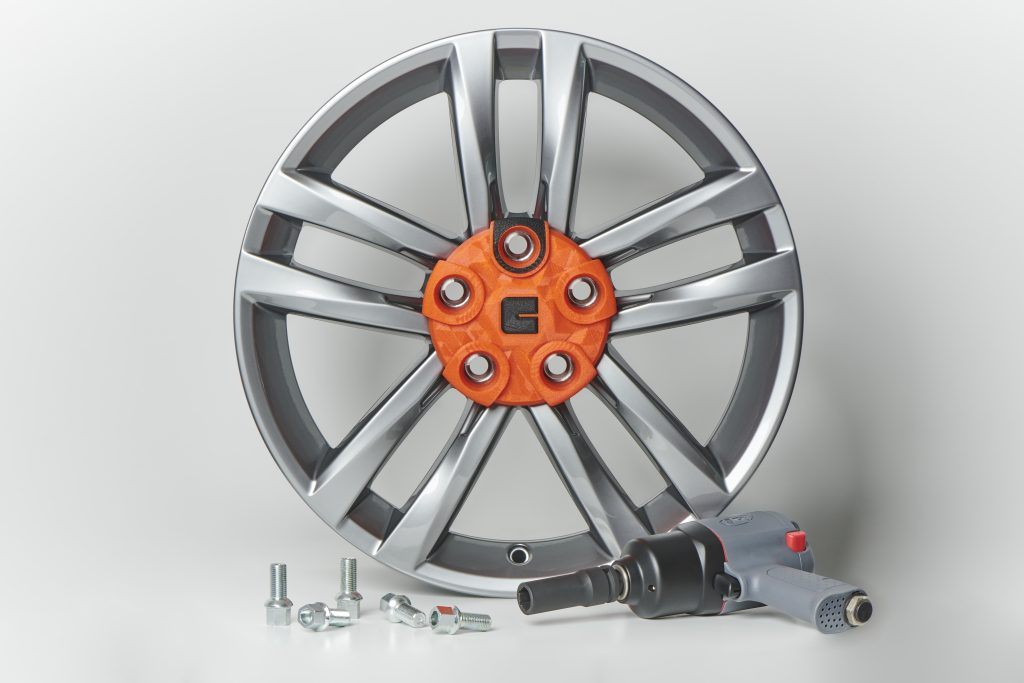
Clariant PLA-HI-GF10 offers the following benefits:
- Higher strength in comparison to PLA
- High impact resistance (will not shatter when dropped on a production floor)
- Availability in many colors to allow color-coding during production
Clariant developed this filament due to the needs of customers looking for a tougher material that would not be difficult to use. The R&D team at Clariant tested out different material variants, with PLA and Polyethylene Terephthalate Glycol (PET-G) chosen for base polymers because they are tough, printable, and present only minimal warpage for users. Glass fiber and impact modification additives were also used to strengthen and modifty the PLA and PET-G further.
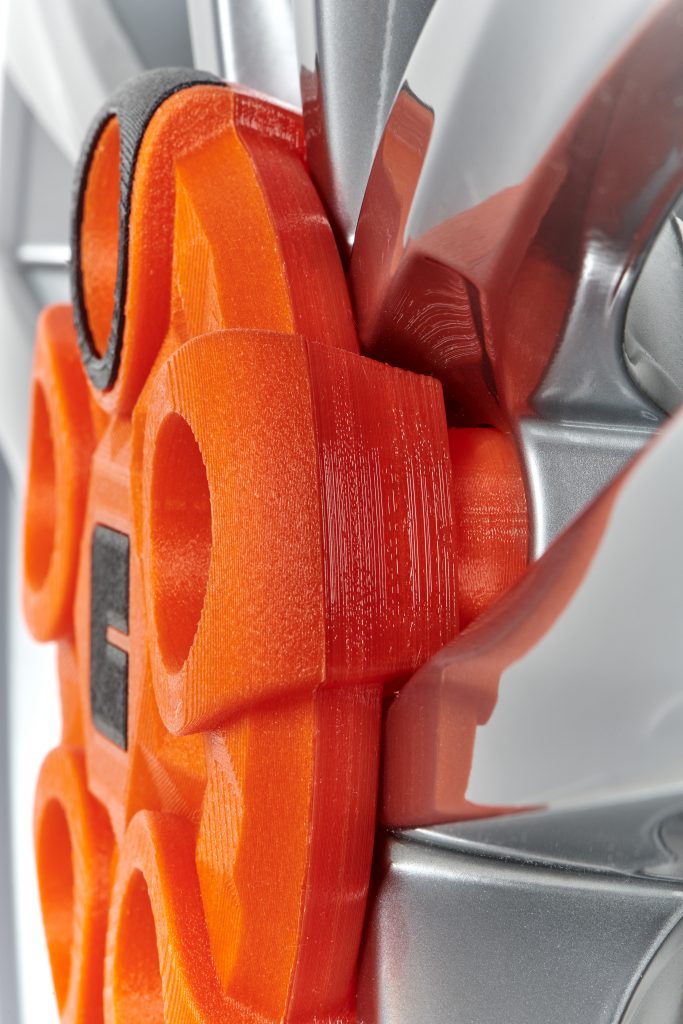
The materials were tested by Clariant 3D printing engineers in Frankfurt, Germany, using Ultimaker S5 printers outfitted with fiber-capable nozzles. The team discovered that the high impact 10% glass fiber reinforced PLA is an ideal manufacturing aid material as it prints exceptionally well, is very strong, and demonstrates good stiffness, toughness as well as high impact resistance.
Additive Manufacturing Consultant, Mark Burghoorn of Cards PLM, a Clariant reseller, shared some insights about the new product:
What applications are you seeing for PLA-HI-GF10?
Jigs, fixtures, tooling, and functional prototype parts that require high tensile strength and toughness but are easy to print are the most popular applications.
Many industrial companies start with regular PLA. Soon they realize that they require a higher-grade engineering filament for use in manufacturing. Today many filament materials could work. But the search (and testing) of these materials still takes time.
The fact that Clariant PLA-HI-GF10 is now available provides us with an easier, faster path to proof of concept and customer acceptance. PLA-HI-GF10 is easy to print on the Ultimaker S5 with a CC0.6 RED hardened nozzle and, compared to other materials, doesn’t require intensive drying.
The partnership between Clariant (materials & print settings), Ultimaker (3D printer & Cura software) and us (sales, customer training & support, Siemens NX CAD software for AM) is the perfect combination towards our industrial target group and very well appreciated.
What types of customers are using 3D printing for jigs and fixtures?
Our target group comprises of manufacturing companies within the Benelux, with a particular focus on the automotive and aerospace markets.
Why are companies turning to 3D printing for jigs and fixtures?
The main business driver is their desire to quickly adjust production and test facilities during engineering (re)design processes. With 3D printing, this can be done almost instantly compared to third-party milling or injection molding. Time on engineering projects can be reduced significantly.
Any insight into the typical cost of a 3D printed fixture instead of a traditionally manufactured one?
A short time to market is critical here, and saving money comes second. We have an automotive example where a traditional fixture costs EUR 3,000 per part and has a project time span of 60 days to realize. With 3D printing, this could be reduced to EUR 187 per part and completed in 6 days.
No matter what level of 3D printing you currently do, chances are you have become a bit of a part-time materials scientist too—and while you may have performed extensive research regarding the best filaments for fabrication on your end, many users today end up wasting time and money through trial and error. Manufacturers like Clariant, a global specialty chemicals company, have already done the hard work for you though—thanks to an experienced research and development team producing customized filament meant for high-performance production. Find out more here.

[Sponsored Article]
The post Clariant PLA-HI-GF10 Now Available for Industrial 3D Printing; Increased Performance at Reduced Cost appeared first on 3DPrint.com | The Voice of 3D Printing / Additive Manufacturing.
3D Printing News Briefs: October 27, 2018
We’re starting off with some news about products being displayed at the upcoming formnext in today’s 3D Printing News Briefs, and then moving on to business and research news. Clariant and Xaar have both revealed what they will be showcasing at formnext 2018 in Munich next month. Aurora Metals has announced a new partnership, while Lockheed Martin is the first organization to have an additive manufacturing facility certified to UL 3400 for AM hazards. Finally, America Makes has announced its next Directed Project Opportunity.
Clariant Presenting Industrial 3D Printing Materials at formnext
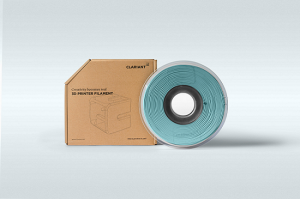 This year’s formnext is coming up in just a few short weeks, and companies all over the world are announcing what products they’ll be bringing with them to the show. Specialty chemicals company Clariant will be showcasing its 3D printing materials and solutions for intelligent industrial manufacturing at the event this year, including featured materials like polyamides for small lot production, customer-tailored colorant and additive guidance, and high impact strength materials that offer electrostatic discharge protection for manufacturing aids.
This year’s formnext is coming up in just a few short weeks, and companies all over the world are announcing what products they’ll be bringing with them to the show. Specialty chemicals company Clariant will be showcasing its 3D printing materials and solutions for intelligent industrial manufacturing at the event this year, including featured materials like polyamides for small lot production, customer-tailored colorant and additive guidance, and high impact strength materials that offer electrostatic discharge protection for manufacturing aids.
“OEMs require that 3D printing materials perform at the same level as their injection molded counterparts. This was the significant factor in achieving the acceptance to allow product production with our materials and will continue to be,” said Joanna Marguier, Senior Manager of R&D for Clariant’s 3D printing business. “From the inception of our 3D printing business, Clariant has focused on providing superior 3D printing materials that achieve the customer’s requirements for their specific application. We work closely with them to tailor solutions to meet their needs.”
Marguier will also be outlining the company’s success with flame retardants in a technical presentation at formnext on November 15. formnext runs November 13-16, and you can visit the Clariant team at booth 3.1-H40 in Hall 3.1 at the Messe Frankfurt.
Xaar Showcasing Latest Inkjet Printhead Technology at formnext
 Speaking of formnext, digital inkjet technology Xaar will be exhibiting the latest in inkjet printhead technology at the show. Visitors can learn how the company’s award-winning High Laydown (HL) technology, which allows for the jetting of 3D fluids with high viscosity (at least 55cP), coupled with its partnerships with other industry leaders, can help its customers get ahead in volume 3D printing. Xaar will also be displaying samples that were produced with high viscosity photoresins from BASF 3D Printing Solutions
Speaking of formnext, digital inkjet technology Xaar will be exhibiting the latest in inkjet printhead technology at the show. Visitors can learn how the company’s award-winning High Laydown (HL) technology, which allows for the jetting of 3D fluids with high viscosity (at least 55cP), coupled with its partnerships with other industry leaders, can help its customers get ahead in volume 3D printing. Xaar will also be displaying samples that were produced with high viscosity photoresins from BASF 3D Printing Solutions
“The formnext show is a major global event for the 3D Printing sector and we are excited to be exhibiting our complete printhead portfolio and HL Technology for volume 3D production. We pride ourselves on providing ongoing support to all our customers’ projects – from early fluid evaluation through to commercialisation. That’s why we are welcoming manufacturers and integrators to visit the Xaar stand and discover how our printhead technology can help them introduce new printers quickly and cost-effectively, thereby delivering a true competitive edge and real value to 3D end- users,” said Simon Kirk, Senior Product Manager at Xaar.
You can visit Xaar at formnext at booth A78 in Hall 3.1
Aurora Labs Partnering with Fortescue Metals Group
Australian metal 3D printing Aurora Labs has signed a preliminary non-binding term sheet agreement with fellow Australian company Fortescue Metals Group. The agreement comprises an Industry Partner Program, and Aurora Labs will work with Fortescue to demonstrate the potential for application of its Rapid Manufacturing Technology (RMT) in the mining industry. The terms of the agreement are for an initial 12 months and may be extended by mutual agreement, and Aurora believes that the venture could even progress further to developing technology together in order to lower operation and production costs in the mining industry.
“We’re very excited to sign a preliminary agreement with Fortescue, and pursue the opportunity to apply Aurora’s Rapid Manufacturing Technology to the mining sector,” said David Budge, Aurora Labs’ Managing Director. “Fortescue are an ideal industry partner for us and they are at the forefront of technological advancements in the mining sector.”
Lockheed Martin Certified UL 3400
![]() Top global safety science company UL has announced that it has certified the first additive manufacturing facility to UL 3400, a set of safety guidelines published last year that address the hazards associated with AM facilities. UL issued this prestigious certification to Lockheed Martin, and its 6,775-square-foot Additive Design and Manufacturing Center in Sunnyvale, California. UL 3400, also called the Outline of Investigation for Additive Manufacturing Facility Safety Management, considers the three layers of safety: material, equipment, and the facility itself, and references applicable standards from OSHA, ASTM International, the National Fire Protection Association, and others. UL and its 3400 guideline cover the potential hazards and risk mitigation measures that are required for these facilities to function safely.
Top global safety science company UL has announced that it has certified the first additive manufacturing facility to UL 3400, a set of safety guidelines published last year that address the hazards associated with AM facilities. UL issued this prestigious certification to Lockheed Martin, and its 6,775-square-foot Additive Design and Manufacturing Center in Sunnyvale, California. UL 3400, also called the Outline of Investigation for Additive Manufacturing Facility Safety Management, considers the three layers of safety: material, equipment, and the facility itself, and references applicable standards from OSHA, ASTM International, the National Fire Protection Association, and others. UL and its 3400 guideline cover the potential hazards and risk mitigation measures that are required for these facilities to function safely.
“Employers, employees, local regulators as well as insurance companies who have to underwrite additive manufacturing facilities, were not fully aware of the inherent material and technology risks. Safety is designed rather than built. Not a single standard or statutory guideline was available that specifically focused on additive manufacturing. Other standards and guidelines were developed for conventional manufacturing processes,” explained Balu V. Nair, UL’s Additive Manufacturing Lead Development Engineer and an important player in developing UL 3400. “We decided to address this industry need by developing a set of guidelines with exclusive focus on additive manufacturing.”
America Makes Announces Next Directed Project Opportunity
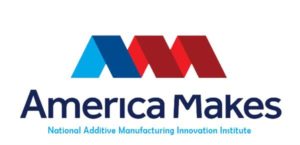 This week, America Makes announced its next Directed Project Opportunity, available for its members for AM applied (R&D) projects for Advanced Tools for Rapid Qualification (ATRQ). The goal is to promote and accelerate the development and deployment of cost effective, energy-efficient 3D printing technologies in order to meet defense and/or commercial needs. Approximately $3.9 million should be made available to fund multiple awards, with at least $1.95 million in matching funds from the winning project teams. The technical requirements of the ATRQ Directed Project Opportunity relate to the America Makes Technology Roadmap, as well as the Integrated DoD AM Roadmap.
This week, America Makes announced its next Directed Project Opportunity, available for its members for AM applied (R&D) projects for Advanced Tools for Rapid Qualification (ATRQ). The goal is to promote and accelerate the development and deployment of cost effective, energy-efficient 3D printing technologies in order to meet defense and/or commercial needs. Approximately $3.9 million should be made available to fund multiple awards, with at least $1.95 million in matching funds from the winning project teams. The technical requirements of the ATRQ Directed Project Opportunity relate to the America Makes Technology Roadmap, as well as the Integrated DoD AM Roadmap.
“For our partners at the DoD, the anticipated outcomes of the America Makes ATRQ Directed Project Opportunity are of the utmost importance. The DoD’s need for rapid qualification and certification of AM processes and materials is great,” said Rob Gorham, the Executive Director of America Makes. “These projects will be instrumental in resolving the current deterrents that are hindering the wider adoption and deployment of AM technologies within the DoD and its supply chain.”
Technical topics for the ATRQ Directed Project Opportunity are Surrogate Damage Generation for LPBF Defects, Degradation of Polymer Parts Deployed in Harsh Environments, and Corrosion Mechanisms of LPBF Materials. All Project Concept forms are due no later than 5 pm EST on Wednesday, November 28, 2018. To see all of the technical project requirements, as well as other information about the Directed Project Opportunity like non-disclosure agreements, eligibility, and the proposal process, check out the America Makes website.
Discuss these stories and other 3D printing topics at 3DPrintBoard.com or share your thoughts in the Facebook comments below.
Find Prodways, Farsoon, Stratasys, Sabic and more 3D printing at Formnext 2018
 Formnext, the largest additive manufacturing and 3D printing trade show in Europe will take place in three weeks time from the 13th through to the 16th November 2018. In the lead up to one of the most highly anticipated shows of the year, 3D Printing Industry is collecting all of the latest product release teasers […]
Formnext, the largest additive manufacturing and 3D printing trade show in Europe will take place in three weeks time from the 13th through to the 16th November 2018. In the lead up to one of the most highly anticipated shows of the year, 3D Printing Industry is collecting all of the latest product release teasers […]
